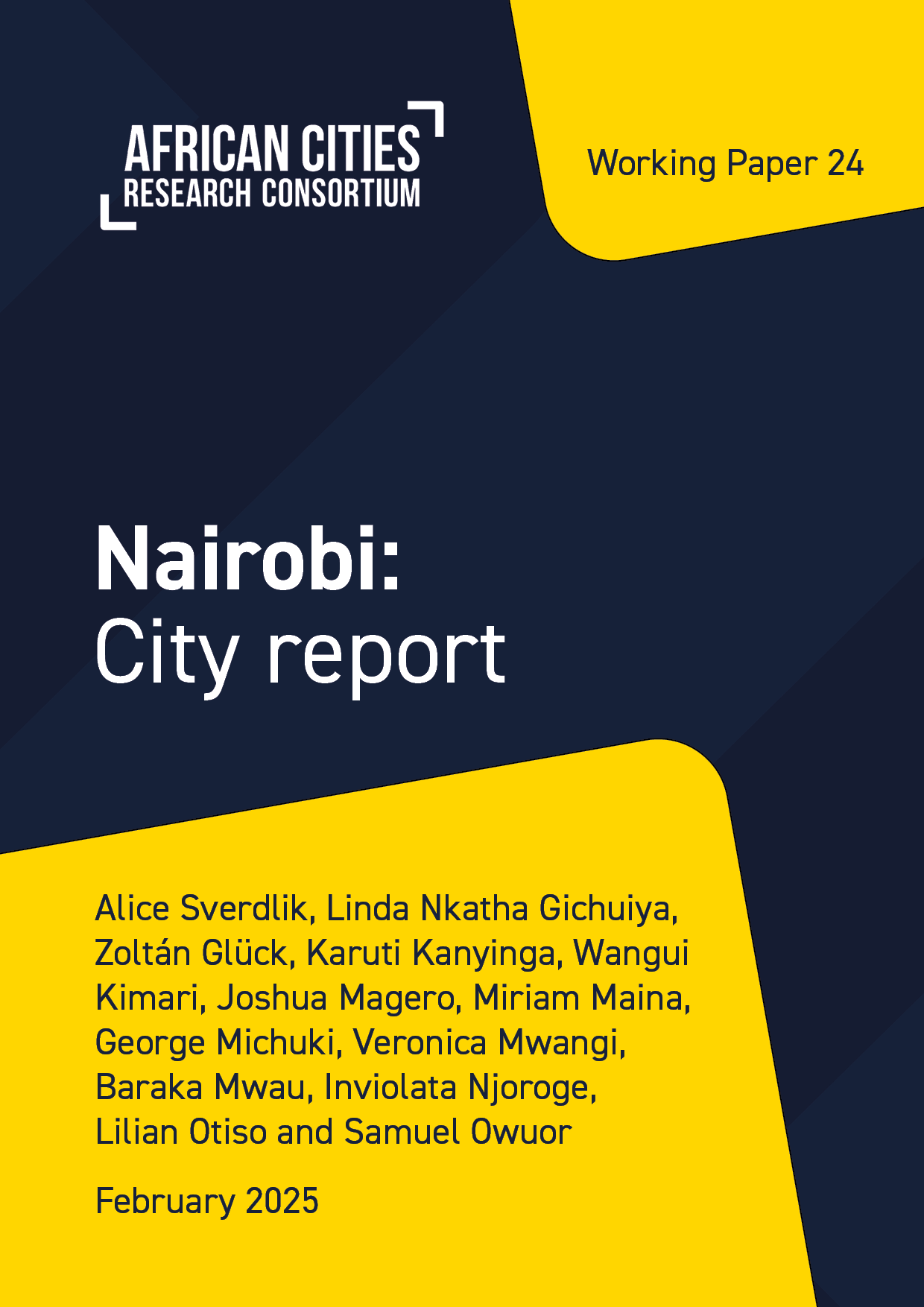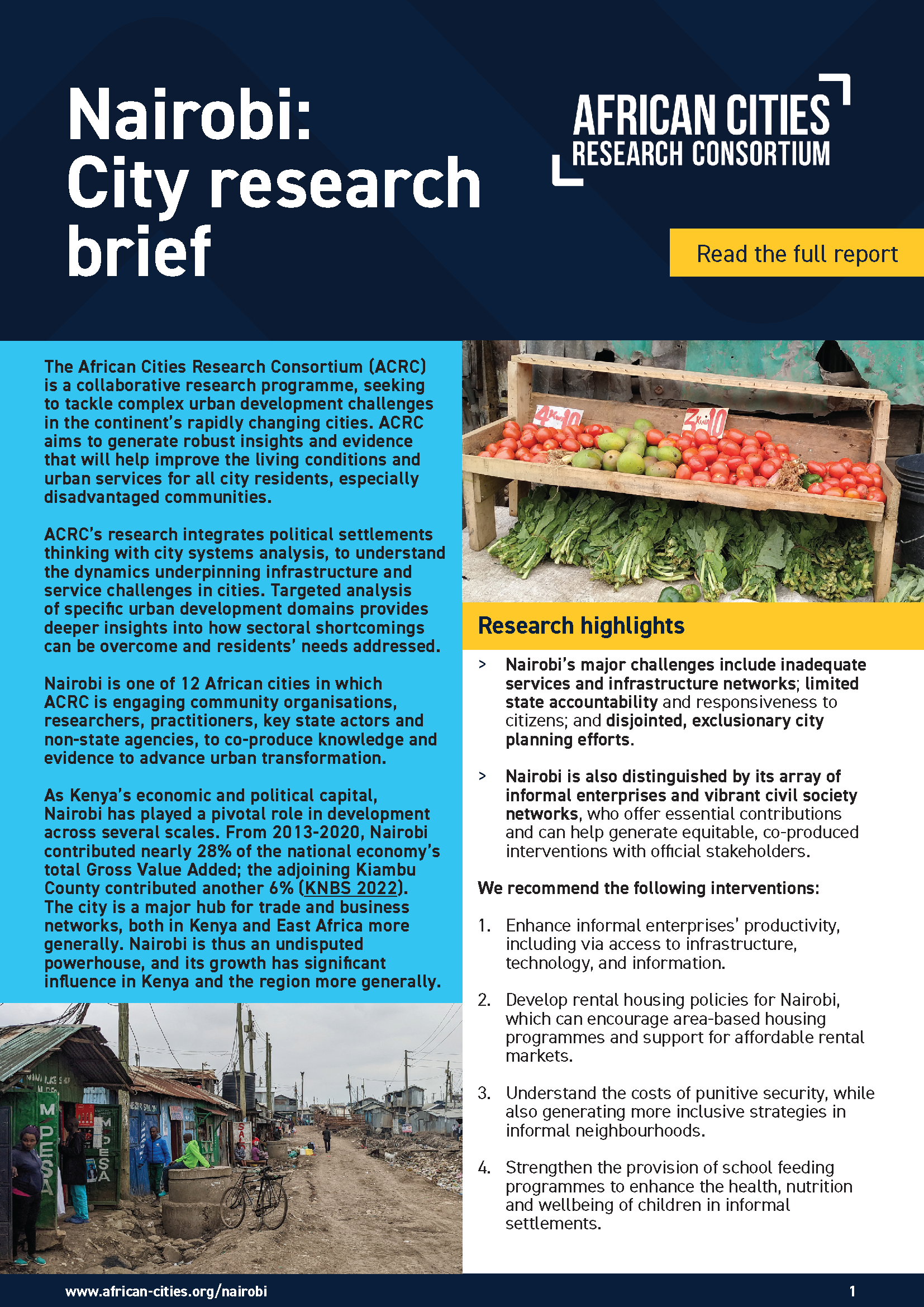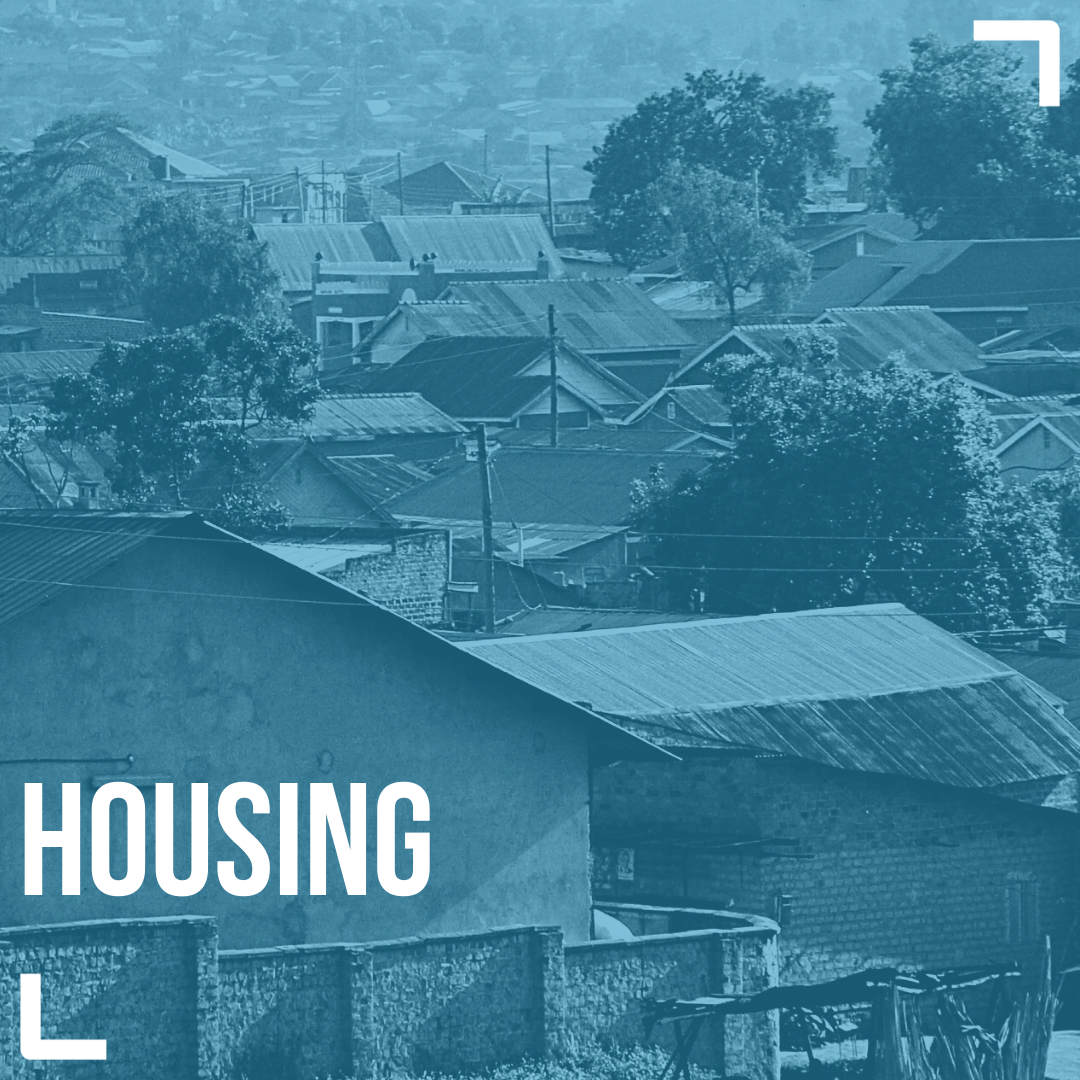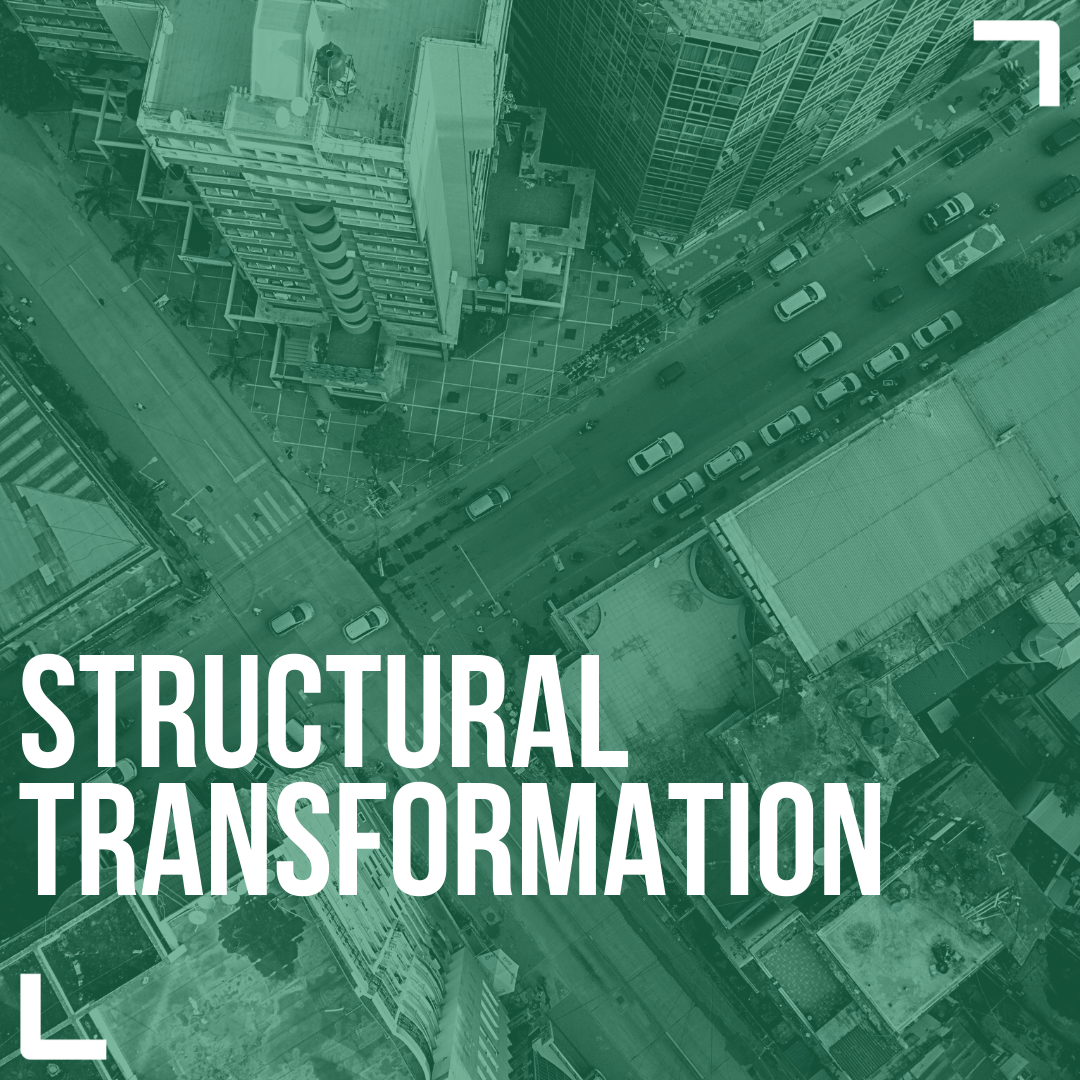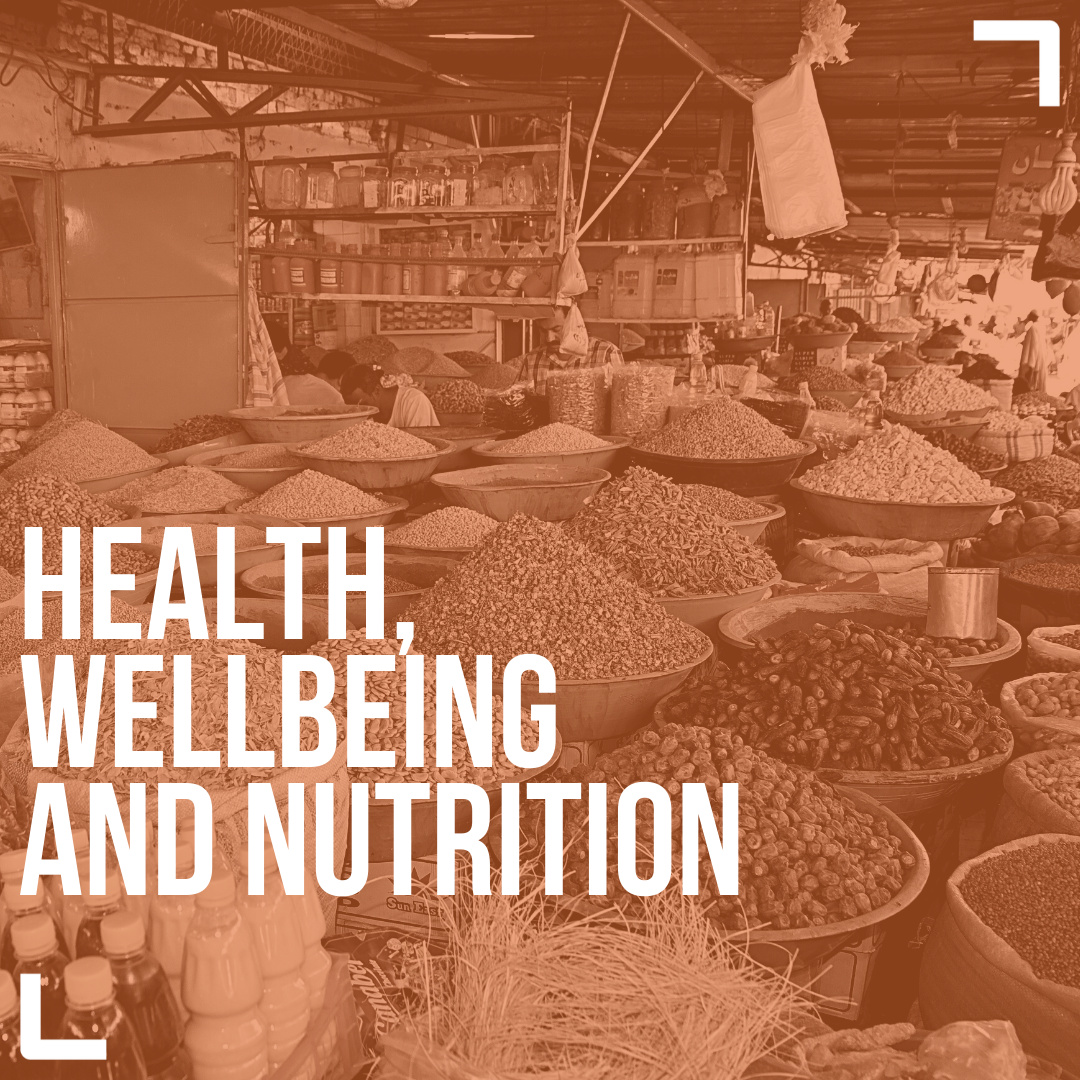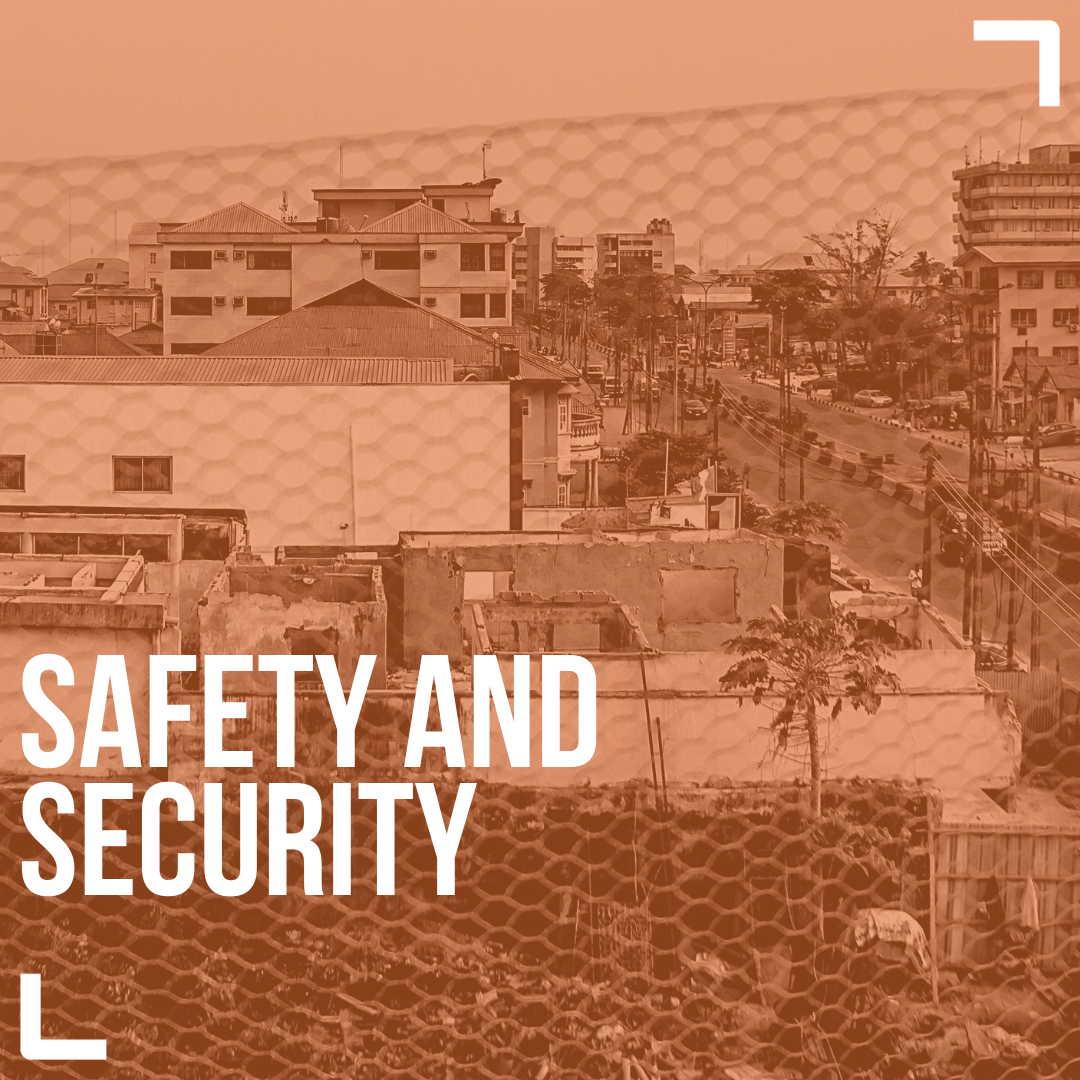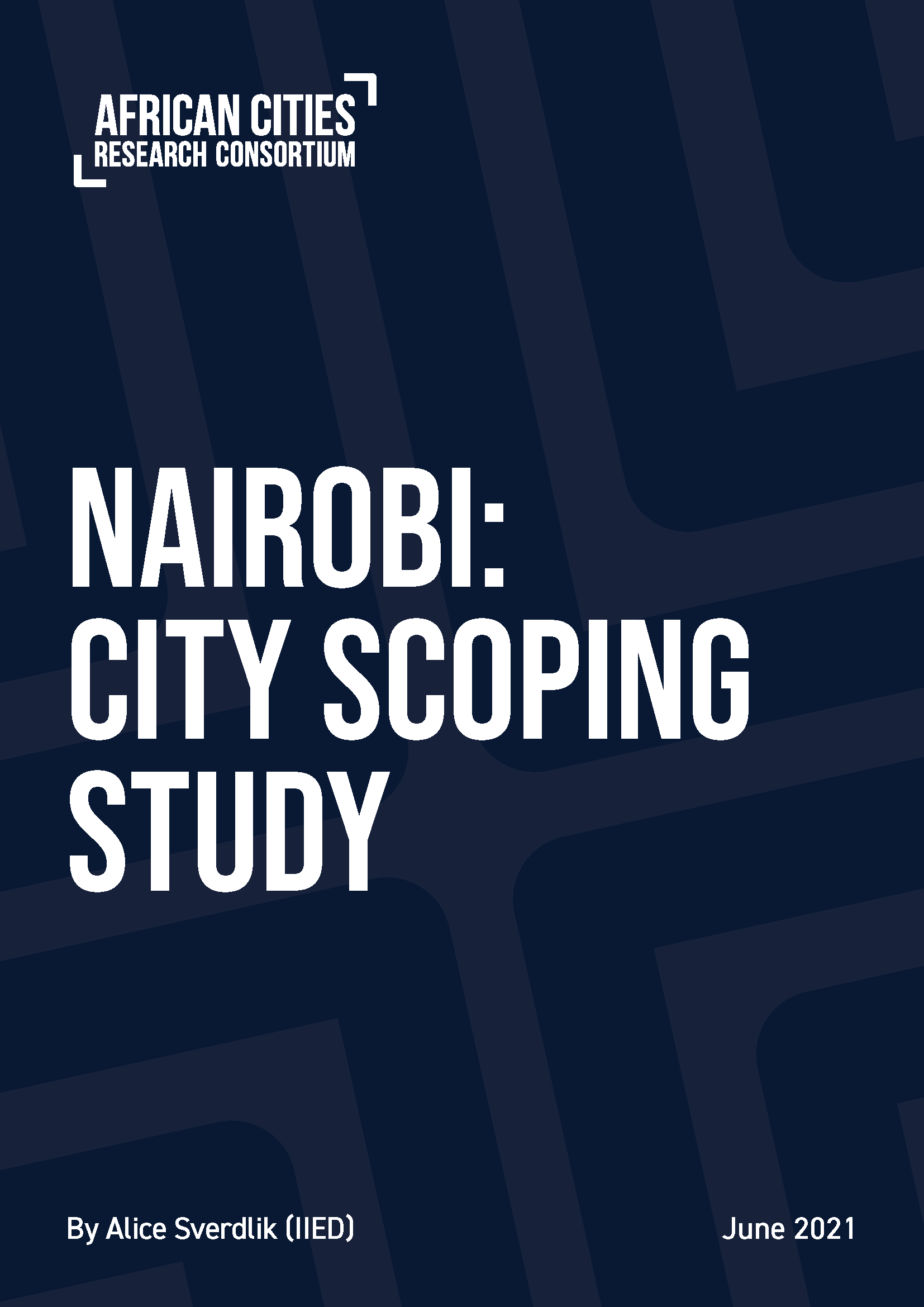Nairobi
Nairobi, Kenya’s capital and primary economic and political centre, is home to an estimated 5.76 million residents.
The city’s establishment dates back to 1899, when it served as a major transport and administrative depot for the Kenya-Uganda Railway.
The ACRC team in Nairobi is working on a portfolio of action research projects identified as local priorities during our Foundation Phase research.

ACRC's Nairobi city team
City manager: Jack Makau
Uptake lead: Jerry Okal
Uptake support: Rosebella Apollo
Politics lead: Susan Mwanzia
Urban development lead: Amollo Ambole
Community knowledge team lead: Wavinya Mutua
Nairobi is organised into 85 electoral wards, with 17 constituencies. The City of Nairobi plays a vital role in administration, shaping policy, catalysing economic development and influencing cultural dynamics nationwide.
However, like many African urban centres, Nairobi has experienced rapid, unplanned urbanisation that has outpaced the rates of infrastructure development and economic growth. Despite being a national and regional powerhouse, Nairobi’s colonial legacy and exclusionary planning continue to intensify urban development challenges, including:
> Inadequate service delivery and infrastructure networks
> Weak state accountability and limited government responsiveness to citizens
> Fragmented and exclusionary city planning initiatives
Since 2020, the African Cities Research Consortium has engaged stakeholders in Nairobi to better understand the urban ecosystem, identify pervasive priority challenges and collaboratively develop interventions to bridge these gaps.
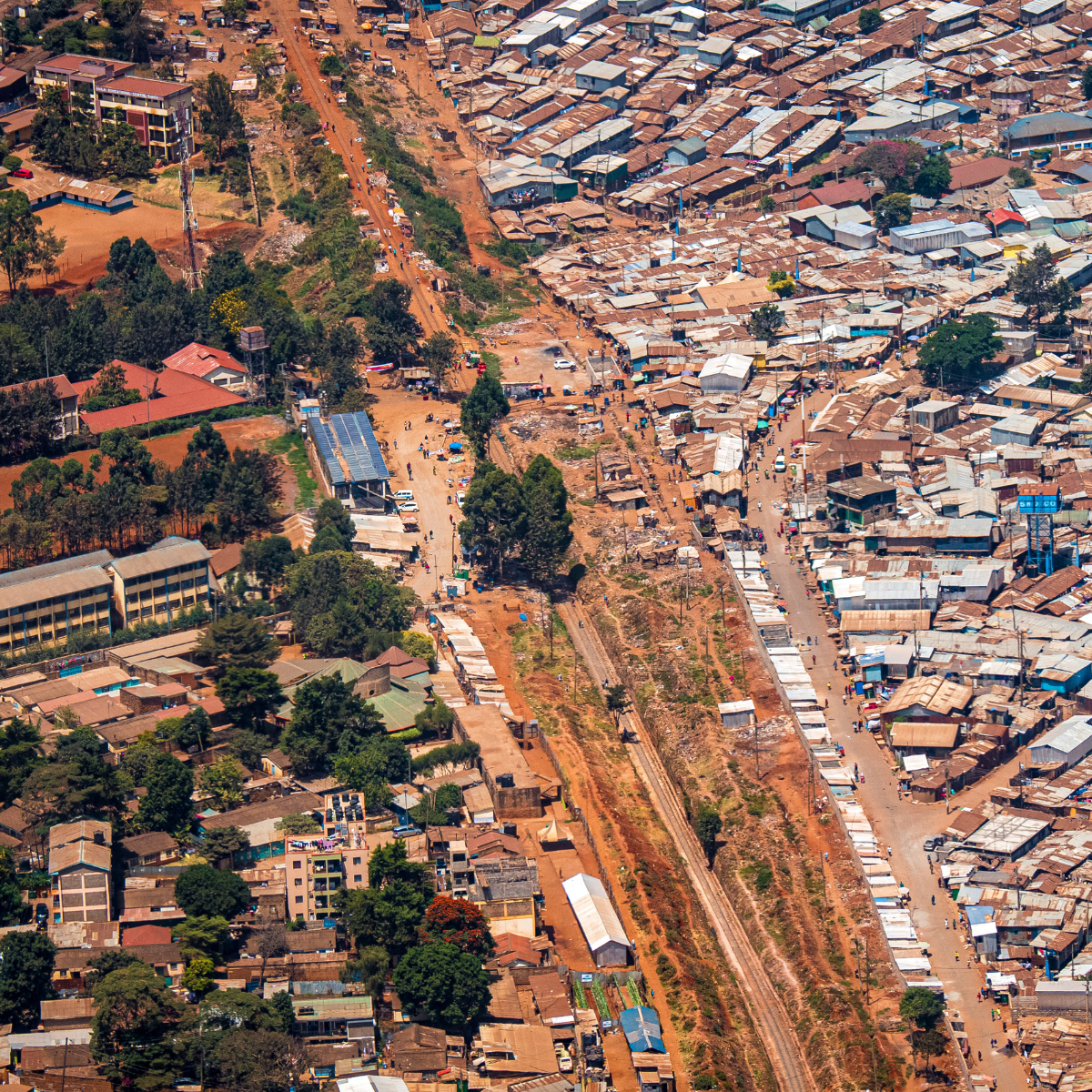
Action research
As part of ACRC’s Implementation Phase, five action research projects are currently underway in Nairobi.
Find out more about these initiatives below.
Healthy food for healthy children: Sustainable healthy diets for healthy children in Nairobi's informal settlements
Lead agency: LVCT Health
Co-designing a sustainable, community-driven school feeding programme to improve the health and nutrition of vulnerable children in informal schools.
Systems change for water and sanitation delivery in informal settlements: A case of Mukuru SPA
Lead agency: Akiba Mashinani Trust (AMT)
Expanding water and sanitation access to 8,000 households and establishing effective governance systems in the Mukuru Special Planning Area.
Democratising land data and empowering communities to address tenure security in Mathare informal settlements, Nairobi
Lead agency: Strathmore University / Akiba Mashinani Trust (AMT)
Transforming low-income residents’ claims into concrete actions to expand their land tenure security in Mathare informal settlements.
Creating the conditions for change in large informal settlements in Nairobi
Lead agency: SDI Kenya
Improving holistic waste management and establishing productive public spaces in Mathare informal settlements.
Shifting protracted displaced from camp to urban: Supporting the implementation of Nairobi’s refugee integration strategy
Lead agency: SDI Kenya / International Institute for Environment and Development (IIED)
Supporting the implementation of the county’s refugee integration strategy to help displaced people transition effectively to urban life.
LATEST Blog posts from Nairobi
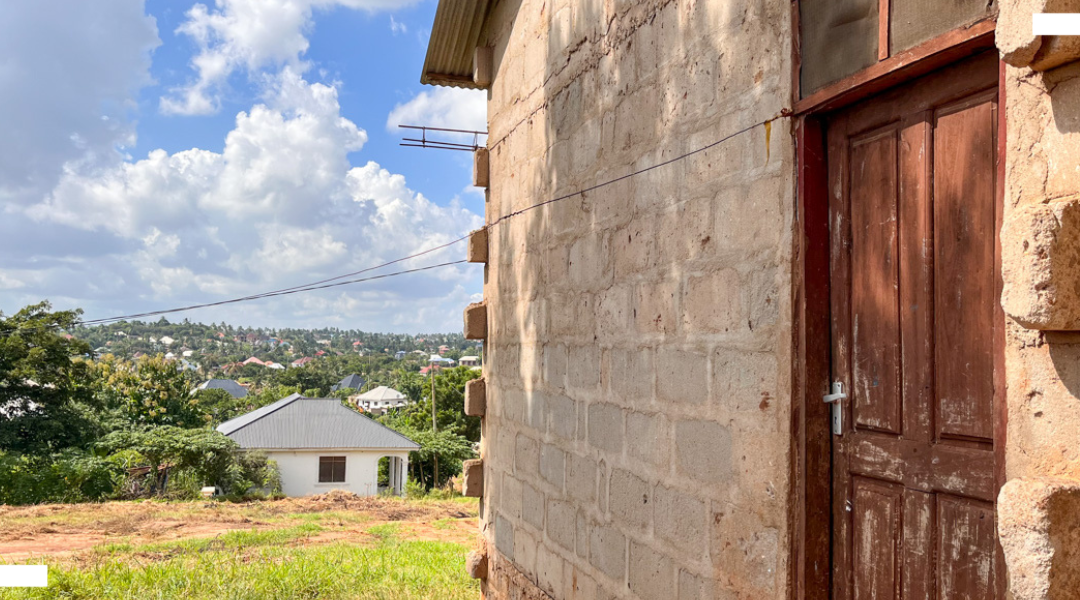
Podcast: Unpacking housing challenges in African cities
Dec 17, 2025
ACRC’s housing domain co-leads Alexandre Apsan Frediani and Ola Uduku join Diana Mitlin for a conversation around housing justice in African cities, drawing on insights from the seven cities studied in their report: Accra, Addis Ababa, Dar es Salaam, Freetown, Lagos, Lilongwe and Nairobi.

Reevaluating research partnerships: Insights from the Early Market Engagement Forum in Nairobi
Nov 25, 2025
Jack Makau and Wavinya Mutua from ACRC’s Nairobi city team shared their insights about community-led led research initiatives at FCDO and PwC’s Evidence Fund Early Market Engagement (EME) event earlier this year.
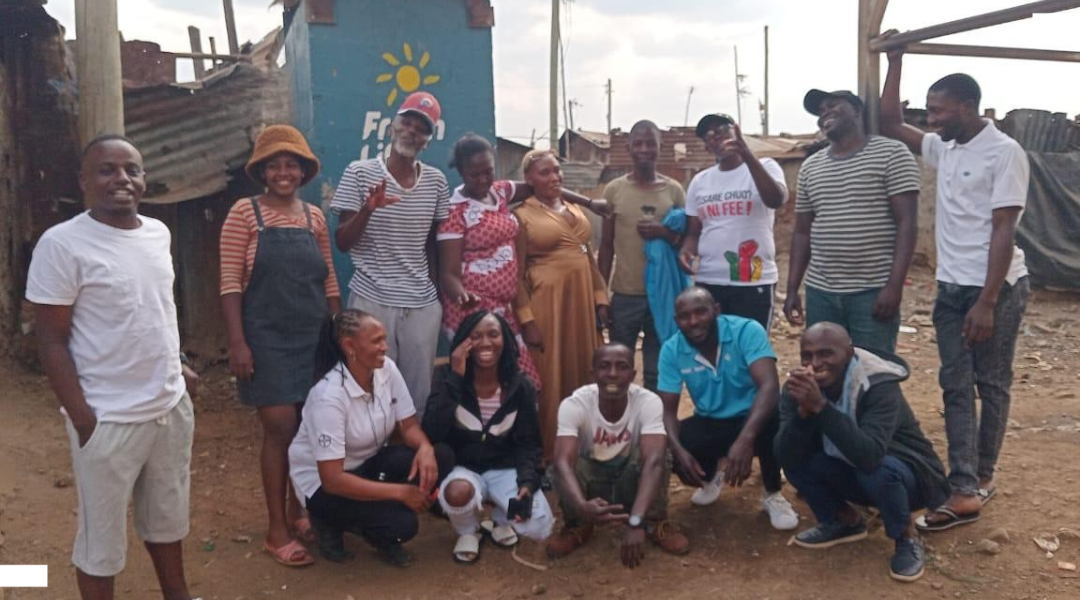
Nairobi learning exchange on waste management: Growth and next steps
Oct 10, 2025
From 7-8 August 2025, the Mathare solid waste co-researchers travelled to Naivasha for a two-day learning exchange. This was a journey filled with eye-opening lessons, inspiring stories and practical ideas that we have brought back home.
Foundation Phase research
Action research projects are built on initial research conducted during the programme’s Foundation Phase, which analysed city systems, politics and various urban development domains.
In Nairobi, this phase of research focused on four domains:
Inception Phase scoping
ACRC’s preliminary phase involved conducting scoping studies in each of the 12 focus cities.
Read the Nairobi city scoping study and hear from author Alice Sverdlik about Nairobi’s complex political landscape.
Nairobi: City Scoping Study
Read the full study below.
Read now
African Cities Research Consortium
Nairobi: City Scoping Study
Nairobi: City Scoping Study By Alice Sverdlik (IIED)Summary
Nairobi is a thriving economic, cultural and political capital, but strongly marked by its inequitable colonial history and complex patterns of exclusionary development. Recent devolution reforms, policy commitments to affordable housing and public transport, and upgrading partnerships in Nairobi’s informal settlements may provide important opportunities for interventions that can address inequalities. The city benefits from vibrant civil society and grassroots movements, a flourishing tech sector (particularly based on mobile technologies and platforms like M-PESA), and strong academic capacities as well as applied research networks. The Nairobi Metropolitan Services has recently improved local services and infrastructure delivery, but there are significant concerns about its military character. More general concerns are related to the potential for democratic backsliding, in addition to Nairobi’s elevated levels of poverty, food insecurity and police brutality (especially during the Covid-19 pandemic). The city faces formidable challenges in providing decent shelter and livelihoods, addressing multiple sources of violence and overcoming entrenched divides. Nairobi residents may face inequalities based on income, gender, age, ethnicity and migration status, as well as linked to access to land and often corrupt, elitist governance. The following scoping study will summarise Nairobi’s context and challenges such as inadequate shelter and multiple health risks before discussing key political developments and opportunities.Urban context
Founded in 1899 as a transport and administrative depot for the Kenya-Uganda Railway, Nairobi benefits from a temperate climate, river networks and fertile soils.[1] British residents during the colonial era typically lived in better-elevated western areas, while Indian railway workers and African workers were confined to low-lying, flood-prone eastern areas.[2] This profound socio-spatial divide continues to define Nairobi, even as the city’s divisions are increasingly socio-economic rather than along racial lines, with informal settlements (referred to as “slums”) often concentrated in the same areas as colonial-era African zones.[3] By 2013, about 160 informal settlements housed over 429,000 households (out of Nairobi’s 1 million households) on less than 5% of the land.[4] Most of these informal rental units are owned by wealthy, politically well-connected absentee landlords.[5] Nairobi has recently aspired to “world-class” city status and prioritised “smart city” strategies,[6] but vigorous efforts are needed to tackle its profound inequalities. Nairobi also has a vibrant mainstream media and active social media, with the latter increasingly supporting advocacy by civil society organisations.[8] Nairobi’s primacy in Kenya’s urban system is unrivalled, and its rapid expansion will continue, though settlement patterns are becoming increasingly complex. Currently encompassing 704 km2 of land,[8] Nairobi has massively expanded from around 11,000 residents living on 3.84 km2 of land in 1910.[9] With 293,000 residents in 1960, the city’s population jumped to 1.38 million in 1990, 3.30 million in 2010, and 4.34 million in 2019.[10] Its annual average rate of change was 3.81% from 2015 to 2020 and is projected to reach 3.94% from 2020 to 2025.[11] In 2015, about 32% of Kenya’s urban population lived in Nairobi, which far exceeded the 9.1% residing in Kenya’s second largest city, Mombasa.[12] Densities in Nairobi vary markedly, peaking in Mathare at 68,941 people per km2 (Table 1). Recent trends in Nairobi include densification in informal settlements and tenements, burgeoning metropolitan growth in nearby towns, such as Thika, and several planned satellite cities.[13] Table 1: Population density changes in selected informal settlements (2000-2020)| Settlement Name | Area in hectares (ha) | Inhabitants/ha in 2000 | Inhabitants/ha in 2010 | Inhabitants/ha in 2020 | Net Increased Inhabitants/ha (2000-2020) |
| Huruma | 78.14 | 614.44 | 911.93 | 1381.42 | 766.98 |
| Kibera | 287.13 | 439.43 | 671.88 | 985.70 | 546.27 |
| Mathare | 100.70 | 329.72 | 519.27 | 804.99 | 475.27 |
| Dandora | 182.15 | 248.61 | 403.18 | 585.31 | 336.7 |
| Korogocho | 99.74 | 281.84 | 481.86 | 588.93 | 307.09 |
| Mukuru kwa Njenga | 133.21 | 155.26 | 257.00 | 358.74 | 203.48 |
| Viwandani | 167.11 | 140.22 | 211.09 | 306.58 | 166.36 |
Political context
Kenya’s central government elections have often been associated with heightened insecurity (including in Nairobi’s informal settlements), and the nation’s profound divisions linked to wealth, land and ethnicity are still unresolved. Following independence in 1963, President Jomo Kenyatta increasingly repressed political opposition while supporting pro-market growth policies. Furthermore, Kenyatta sought to ensure that fellow elites (largely from the Kikuyu ethnic group) benefited from patronage systems and he showed little concern for redistribution.[19] After succeeding Kenyatta in 1978, President Daniel Moi soon instituted a de jure one-party state, catering for a narrow set of (mainly Kalenjin ethnic group) elites, and he utilised increasingly authoritarian tactics during the 1980s’ economic crisis alongside rampant grabbing of public lands.[20] Multi-party elections were reintroduced in 1992, but Moi retained power until 2002, due to a fragmented opposition and political intimidation.[21] Multi-party elections in 1992 and 1997 were marred by significant ethnic violence and displacement; in 2007-08 over 1,000 people were killed and 600,000 displaced, including clashes in some of Nairobi’s informal settlements.[22] Currently, Kenya has a “competitive-clientelist” political settlement characterised by relatively high levels of elite cohesion and entrenched patronage politics often linked to ethnicity.[23] Ethnicity is just one of several (often interrelated) identities, and its political salience should not be overstated. Many reports recognise that “land problems lie at the heart of Kenyan politics”, with land-grabbing especially rife in Nairobi.[24] There are longstanding tensions between Nairobi’s national government and the city’s leaders, as underscored in the recent establishment of Nairobi Metropolitan Services (NMS). After 1963, Nairobi’s city council became notorious for land-grabbing and seeking to curtail any political rivals; planning was largely ignored and the metropolitan growth strategy (1973) never implemented.[25] Given Nairobi’s political and economic significance, it is unsurprising that Kenyan presidents repeatedly intervened in its administration. For instance, in the 1980s, Moi appointed the city council in an (unsuccessful) attempt to improve service delivery.[26] More recently, President Uhuru Kenyatta instructed the NMS to replace the controversial governor, Mike Sonko, undercutting democratic local governance, but again promising to improve services.[27]Urban challenges
Poverty and food insecurity
Reflecting limited policy recognition or undercoverage of informal workers and informal settlements, official data may significantly underestimate Nairobi’s levels of poverty. Using a poverty line of about $1.98/day in 2016, government data found low levels of poverty in Nairobi: 22% of children, 12% of youths, 16% of adults and 19% of elderly residents were poor.[28] However, other findings indicate that most households in informal settlements face “chronic poverty” (over three years of deprivation, with a poverty line of $1.90/day). From 2015 to 2018, 54% of households in the informal settlement of Viwandani were in chronic poverty and 76% of households in another informal settlement, Korogocho, were chronically poor.[29] Food insecurity in Nairobi is widespread and linked to poverty as well as gendered disadvantage. In a citywide survey of over 1,400 households, 58% of households experienced moderate or severe food insecurity, with low-income and female-headed households recording elevated levels of food insecurity.[30] Economic downturns linked to Covid-19 have exacerbated poverty and food insecurity, especially among informal labourers unable to work.[31] Based on surveys in May 2020 of over 200 residents in five informal settlements, 74% skipped meals or ate less because they could not afford food.[32] At the same time, Covid-19 spurred the expansion of the Kenyan government’s initiative known as ‘Kazi Mtaani’[33] to support youth livelihoods (especially community clean-ups and other hygiene activities) in informal settlements. The government has also provided emergency cash transfers,[34] while the Give Directly initiative and Innovations for Poverty Action similarly provided cash transfers in some of Nairobi’s informal settlements.Health and environmental risks
Residents of Nairobi’s informal settlements often face multiple threats simultaneously, due to overlapping environmental health hazards, as well as violence, maternal health risks and non-communicable disease. Climate change models indicate that by 2040, Nairobi’s daily maximum temperatures will increase by between 0.5 and 2°C, with uncertain projections regarding rainfall.[35] Nairobi’s informal settlements already experience higher temperatures, largely as a result of scarce vegetation, limited reflectivity and extremely dense structures.[36] Informal settlements such as Kibera and Mukuru are also at heightened risk of flooding, due to poor drainage, inadequate solid waste management and/or location in the riparian reserves.[37] Research by African Population and Health Research Center (APHRC) found that childhood mortality rates in Nairobi’s informal settlements fell from 2000 to 2012, but slums’ under-five mortality rate in 2012 still exceeded the city’s overall rate in 2008-09 (79.8 per 1,000 vs. 63.4 per 1,000).[38] As seen below, adult mortality patterns in Nairobi’s informal settlements are strongly gendered (Figure 2). Injury deaths are far more common among men than women (31% vs. 7.2%), men are much more likely to die of assault, and women are more than twice as likely to die of HIV/Aids. Other leading causes of adult mortality include tuberculosis, cardiovascular disease and obstetric causes.Land, housing and infrastructure
Nairobi’s ongoing sprawl and highway construction contributes to rising levels of air pollution, forced evictions and declining greenspaces (especially in informal settlements).[39] The informal rental market predominates in Nairobi’s (often low-quality) housing provision, which is strongly shaped by corrupt local and national governance, dysfunctional planning systems and land mismanagement. About 34% of Nairobi’s residents rent single rooms in informal settlements (typically iron sheets and/or mud), while 36% live in single rooms in five- to ten-storey tenements built of stone and concrete.[40] Significant challenges in housing delivery include siloed local departments, limited technical capacity alongside excessive bureaucracy, shortfalls in affordable housing finance and lack of political commitment to serving the poor.[41] Nairobi has a lengthy history of politicised land deals, failure to deliver land for public housing and irregular land allocations that have often marginalised low-income residents.[42] Meanwhile, land records are still being digitised and are rarely updated. Nairobi’s property tax base remains narrow and vulnerable to political manipulation.[43] Although infrastructure delivery varies widely across Nairobi, low-income residents often rely on informal providers that may offer insecure, poorly maintained or low-quality services at a premium. In 2019, Nairobi’s sewerage coverage was 51% and water coverage reached 77% of households, but offering only six hours of supply daily.[44] Despite promising efforts to enhance water, sanitation and hygiene in Nairobi’s informal settlements (for example, automated water dispensing units), many low-income residents continue to use shared, poorly maintained provision, including public water-taps, pay-per-use public toilets, and pit latrines.[45] Lengthy queues at public taps and toilets can impose gender-inequitable time burdens, as well as heightened risks of sexual violence, especially at night in Nairobi’s insecure informal settlements.[46] Studies in informal settlements have also uncovered a “poverty penalty” and a rent premium, with residents paying more for lower-quality shelter and infrastructure than their counterparts in formal housing.[47] Meanwhile, young people are often engaged in a creative “hustle” of managing solid waste in informal settlements, and access to waste can become a source of conflict in some large dumpsites.[48] Regarding Nairobi’s transport, over 40% of all trips are via paratransit (typically minibuses called matatu), and another 40% via walking. Private automobiles account for just 13.5%, yet “transportation planning in Nairobi continues to be skewed [in favour of] wealthier car users”.[49] The politics of provision and relations between formal/informal infrastructure providers can differ by sector as well as informal settlement.[50] For instance, matatu drivers may collude with police and politicians, while also periodically hiking fares and clashing with one another.[51] The gang Mungiki has dominated some matatu routes, in addition to controlling water-taps and electricity in Mathare.[52]Safety and security
Nairobi’s insecurities are often related to control of land, elections, state repression and extrajudicial killings, and terrorism/radicalisation.[53] In areas with disputed land ownership, gangs often collect “protection fees” from housing developers. Gangs are also influential actors in land markets, especially in areas with illegal land invasions and subdivisions.[54] The risk of ethnic-inflected violence is a major concern around elections – including via militias manipulated by key politicians – and such hostilities have occurred in some of Nairobi’s informal settlements.[55] Young men in informal settlements often bear the brunt of police brutality and there has been a marked increase in police killings since the onset of the pandemic.[56] Nairobi is also home to at least 80,000 refugees, largely from Somalia, South Sudan, DRC and Ethiopia.[57] While many of Nairobi’s refugees face precarious livelihoods, alongside linguistic and other barriers to shelter or services, Somali refugees are often particularly at risk of police harassment and discrimination.[58]Political factors shaping how urban challenges are addressed
The Building Bridges Initiative, succession, and constitutional challenges
Kenya faces substantial difficulties in fulfilling its constitutional promises to promote democracy, gender equality and rule of law, with further emerging challenges linked to a 2021 referendum and 2022 elections. Since the disputed 2017 presidential elections, the Building Bridges Initiative (BBI) has sought to change political structures by creating a prime ministerial position and independent judiciary ombudsman, alongside other steps to address divisive elections and promote national unity.[59] But such reforms remain controversial and depend upon a constitutional referendum in June 2021, with some analysts and high-profile activists instead prioritising the implementation of existing laws.[60] Additionally, the 2010 Constitution outlawed gender discrimination, but there are significant gaps between the constitution and inequitable realities facing Kenyan women.[61] In September 2020, then-Chief Justice, David Maranga, advised President Kenyatta to dissolve parliament for its failure to fulfil the constitution’s two-thirds gender principle (meaning no more than two out of three parliamentarians should be of the same gender), as only 21% of MPs are currently female.[62] BBI has promised to redress gendered imbalances in parliament,[63] but it remains unclear if this solution will be adequate. Finally, Uhuru’s second term will expire in 2022, and Kenya’s political settlement might be destabilised by rivalries between various presidential contenders (including Raila Odinga, William Ruto, current governors, and ex-vice presidents).Devolution and local governance
Realising the democratic possibilities of devolved government is an especially daunting challenge in Nairobi. The constitution ushered in significant reforms to promote an independent judiciary and to devolve powers as well as resources to 47 county governments, thus generating a “more dynamic, competitive and democratic political system”.[64] Devolution has helped attenuate Kenya’s prior “winner-takes-all” politics that had previously fostered violence.[65] But ensuring devolution’s accountable, responsive and inclusive potential is particularly challenging in Nairobi, where the Nairobi Metropolitan Service has recently utilised top-down strategies and is dominated by military officers.[66] There are further concerns about the reinvigoration of patronage networks at the local level and continuation of predatory political practices.[67] Although the Kenyan government has devolved approximately 25% of national revenue, patronage networks are only being “rerouted” rather than eliminated.[68] Data from Nairobi county’s latest budget review and the Office of the Controller of Budget suggest that development spending has been sidelined in favour of officials’ personal gain, and the county’s own-source revenues had fallen significantly, even before Covid-19 (Figure 5). Total expenditures on wages and salaries in the financial year ending 2020 amounted to approximately 57% of total spending, but a mere 8.5% of expenditures were utilised for development.[69] On the other hand, Nairobi has considerably improved its e-governance, including an online payment system for several services and plans to enhance its traffic management, GIS and other digital services.Slum upgrading and affordable housing
There are key opportunities to upgrade informal settlements and enhance low-cost housing provision. As part of the ‘Big 4’ Agenda, President Kenyatta pledged to build 500,000 affordable homes (from 2017 to 2022), and the affordable housing programme includes provision for households with annual earnings below Ksh. 50,000. However, such plans have been criticised for prioritising market-based approaches over support for upgrading or affordable rental housing, and it is still unclear how low-income households will be reached.[70] There are also (fairly small-scale) redevelopment projects: Nairobi annually needs 100,000 units of housing, but the county’s current plans to redevelop seven older housing estates will only provide 10,000 units.[71] Nairobi is the site of multiple upgrading initiatives, such as the World Bank’s newly-launched $150m second phase of the Kenya Informal Settlements Improvement Project (KISIP2) and the pioneering Special Planning Area (SPA) in Mukuru. The Mukuru SPA is rooted in years of advocacy and action research by Muungano wa Wanavijiji (Kenya’s urban poor federation), its technical support organisation, SDI-Kenya, and financial facility, Akiba Mashinani Trust (together “the Muungano Alliance”), alongside other civil society and academic partners.[72] Thanks to robust community participation and eight interdisciplinary planning consortia (with government support), the SPA has generated equitable, multisectoral and scaled-up interventions with only minimal displacement.[73] The inclusive SPA model will likely be replicated in Nairobi’s other informal settlements.African Cities Research Consortium: Potential added value
The confluence of strong grassroots, civil society and research networks – as well as the progressive constitutional entry points and recent upgrading initiatives – offer possibilities for impactful action research. Key consortium partners for ACRC in Nairobi include the Muungano Alliance, who are members of Slum Dwellers International (SDI), and the Partnership for African Social and Governance Research (PASGR). These partners have well-established links with an array of local policymakers, international agencies and practitioners in Nairobi. There are already valuable opportunities for emerging reform coalitions, as exemplified by the Mukuru SPA. Thus, ACRC is well-placed to analyse intricate power dynamics and outcomes of changing local/national political settlements (with attention to the unfolding trajectories of Nairobi Metropolitan Services and devolution reforms); explore emerging opportunities for democratic deepening; and identify ways to foster more equitable urbanisation pathways.References
African Population and Health Research Centre (APHRC) (2014). Population and Health Dynamics in Nairobi’s Informal Settlements: Report of the Nairobi Cross-sectional Slums Survey. Nairobi: APHRC. Available online (accessed 25 May 2021). Akiba Mashinani Trust with University of Nairobi, Strathmore University and Katiba Institute (2015). Improving Access to Justice and Basic Services in the Informal Settlements in Nairobi: An Action Research Approach. Available online (accessed 25 May 2021). Amis, P. (1984). “Squatters or tenants: The commercialization of unauthorized housing in Nairobi”. World Development 12(1): 87-96. Anyamba, T. (2011). “Informal urbanism in Nairobi”. Built Environment 37(1): 57-77. Bagayoko, M., Akeyo, D., Kadengye, D. T. and Iddi, S. (2020). “Understanding wealth transitions among households in urban slums of Nairobi: A multi-state transition modelling approach”. Global Epidemiology, 2, 100037. Balakian, S. (2016). “‘Money Is Your Government’: Refugees, mobility, and unstable documents in Kenya’s Operation Usalama Watch”. African Studies Review 59(2): 87-111. Baraka, C. (2020). “Kenya’s road to dictatorship runs through Nairobi County”. Foreign Policy, 26 June. Available online (accessed 25 May 2021). Bassett, E. (2020). “Reform and resistance: The political economy of land and planning reform in Kenya”. Urban Studies 57(6): 1164-1183. Buigut, S., Ettarh, R. and Amendah, D. D. (2015). “Catastrophic health expenditure and its determinants in Kenya slum communities”. International Journal for Equity in Health 14(1): 1-12. Campbell, K. B., Rising, J. A., Klopp, J. M. and Mbilo, J. M. (2019). “Accessibility across transport modes and residential developments in Nairobi”. Journal of Transport Geography 74: 77-90. Cheeseman, N., Kanyinga, K., Lynch, G., Ruteere, M. and Willis, J. (2019). “Kenya’s 2017 elections: Winner-takes-all politics as usual?” Journal of Eastern African Studies 13(2): 215-234. Cheeseman, N., Kanyinga, K. and Lynch, G. (2020). “The political economy of Kenya: Community, clientelism, and class”. In N. Cheeseman, K. Kanyinga and G. Lynch (eds.) (2020). The Oxford Handbook of Kenyan Politics. Oxford: Oxford University Press. Corburn, J. Makau, J. (2016). “Coproducing slum health in Nairobi, Kenya”. In J. Corburn and L. Riley (eds.), Slum Health: From the Cell to the Street. Berkeley, CA: University of California Press, pages 153-189. D’Arcy, M. (2020). “Devolution and county government’. In N. Cheeseman, K. Kanyinga and G. Lynch (eds.) (2020). The Oxford Handbook of Kenyan Politics. Oxford: Oxford University Press. Elfversson, E. and Höglund, K. (2019). “Violence in the city that belongs to no one: Urban distinctiveness and interconnected insecurities in Nairobi (Kenya)”. Conflict, Security & Development 19(4): 347-370. Ghai, Y. (2020). “Constitutions and constitutionalism”. In N. Cheeseman, K. Kanyinga and G. Lynch (eds.), The Oxford Handbook of Kenyan Politics. Oxford: Oxford University Press. Gulyani, S. and Talukdar, D. (2008). “Slum real estate: The low-quality high-price puzzle in Nairobi’s slum rental market and its implications for theory and practice”. World Development 36(10): 1916-1937. Guma, P. K. and Monstadt, J. (2020). “Smart city making? The spread of ICT-driven plans and infrastructures in Nairobi”. Urban Geography, 1-22. Hake, A. (1977). African Metropolis: Nairobi’s Self-help City. London: Chatto and Windus for Sussex University Press. Horn, P., Kimani, J., Makau, J. and Njoroge, P. (2020). “Scaling participation in informal settlement upgrading: A documentation of community mobilisation and consultation processes in the Mukuru Special Planning Area in Nairobi, Kenya”. Working paper. Manchester: Global Development Institute, The University of Manchester. Jones, P. S. (2020). “Nairobi: The politics of the capital”. In N. Cheeseman, K. Kanyinga and G. Lynch (eds.), The Oxford Handbook of Kenyan Politics. Oxford: Oxford University Press.Kagwanja, P. (2009). “Courting genocide: Populism, ethno-nationalism and the informalisation of violence in Kenya’s 2008 post-election crisis”. Journal of Contemporary African Studies 27(3): 365-387. Kameri-Mbote, P. (2018). “Constitutions as pathways to gender equality in plural legal contexts”. Oslo Law Review 5(1): 21-41. Kimani, J., Steege, R., Makau, J., Nyambuga, K., Wairutu, J. and Tolhurst, R. (2021). “Building forward better: Inclusive livelihood support in Nairobi’s informal settlements”. IDS Bulletin 52(1). Kimari, W. (2020). “Outlaw Nairobi versus the pandemics”. City & Society 32(2). Kiruga, M. (2020). “Kenya: Referendum new sticking point in BBI constitutional amendment bill”. The Africa Report, 3 December. Available online (accessed 25 May 2021). Klopp, J. M. (2000). ‘Pilfering the public: the problem of land grabbing in contemporary Kenya’. Africa Today, 7-26. Klopp, J. M. (2012). “Towards a political economy of transportation policy and practice in Nairobi”. Urban Forum 23(1): 1-21. Klopp, J. M. and Lumumba, O. (2017). “Reform and counter-reform in Kenya’s land governance”. Review of African Political Economy 44(154): 577-594. KNBS (2020a). Economic survey 2020. Kenya National Bureau of Statistics. KNBS (2020b). Comprehensive Poverty Report: Children, Youth, Women, Men & The Elderly, from National to County Level. KNBS and Republic of Kenya (2019). Kenya Population and Housing Census, Vol 1: Population by County and Sub-county. Nairobi: KNBS and Republic of Kenya. Lines, K. and Makau, J. (2017). “Muungano nguvu yetu (unity is strength): 20 years of the Kenyan federation of slum dwellers”. London: IIED. Makau, J. and Weru, J. (2018). “Would we know scale if she walked by? Revolutionary planning in Mukuru, Nairobi”. In J. Bolnick, S. Dobson, S. Patel, A. Kallergis and N. MacPherson (eds.), Know Your City: Slum Dwellers Count. Cape Town: SDI. Available online (accessed 25 May 2021). Manji, A. (2020). “Land rights and the rule of law”.In N. Cheeseman, K. Kanyinga and G. Lynch (eds.), The Oxford Handbook of Kenyan Politics. Oxford: Oxford University Press. Manji, A. (2015). “Bulldozers, homes and highways: Nairobi and the right to the city”. Review of African Political Economy 42(144): 206-224. Mberu, B., Wamukoya, M., Oti, S. and Kyobutungi, C. (2015). “Trends in causes of adult deaths among the urban poor: Evidence from Nairobi urban health and demographic surveillance system, 2003-2012”. Journal of Urban Health 92(3): 422-445. Meagher, K. (2013). “Unlocking the informal economy: A literature review on linkages between formal and informal economies in developing countries”. WIEGO Working Paper 27. Manchester: WIEGO. Available online (accessed 25 May 2021). Mitra, S., Mulligan, J., Schilling, J., Harper, J., Vivekananda, J. and Krause, L. (2017). “Developing risk or resilience? Effects of slum upgrading on the social contract and social cohesion in Kibera, Nairobi”. Environment and Urbanization 29(1): 103-122. Mitullah, W. (2020). “Gender mainstreaming and the campaign for equality”. In. N. Cheeseman, K. Kanyinga and G. Lynch (eds.), The Oxford Handbook of Kenyan Politics. Oxford: Oxford University Press. Mutahi, P. and M. Ruteere, M. (2019). “Violence, security and the policing of Kenya’s 2017 elections”. Journal of Eastern African Studies 13(2): 253-271. Muindi, K., Mberu, B., Aboderin, I. and Amugsi, D. (2020). “Conflict and crime in municipal solid waste management: Evidence from Mombasa and Nairobi, Kenya”. Cities & Health: 1-9. Muindi, K and Mberu, B. (2019). “Urban refugees in Nairobi: Tackling barriers to accessing housing, services and infrastructure”. IIED Working Paper. London: IIED. Mwau, B., Sverdlik, A. and Makau, J. (2020). “Urban transformation and the politics of shelter: Understanding Nairobi’s housing markets”. IIED Working Paper. London: IIED. Mwau, B. and Sverdlik, A. (2020). “High rises and low-quality shelter: Rental housing dynamics in Mathare Valley, Nairobi”. Environment and Urbanization 32(2): 481-502. Myers, G. (2015). “A world-class city-region? Envisioning the Nairobi of 2030”. American Behavioural Scientist 59(3): 328-346. Nairobi City County (2014). The Project on Integrated Urban Development Master Plan for the City of Nairobi in the Republic of Kenya. Final Report, Part I: Current Conditions. Nairobi City County (NCC) with technical support from Japan International Cooperation Agency (JICA). Available online (accessed 25 May 2021). Nairobi City County (2015). Non-motorized Transport Policy: Towards NMT as the Mode of Choice. Available online (accessed 25 May 2021). Nairobi City County (2020). County Budget Review and Outlook Paper, September 2020. Available online (accessed 25 May 2021). Nyabola, N. (2018). Digital Democracy, Analogue Politics: How the Internet Era is Transforming Politics in Kenya. London: Zed Books. Nyabwengi, L. M. and K’Akumu, O. A. (2019). “An evaluation of property tax base in Nairobi city”. Journal of Financial Management of Property and Construction 24(2). Nyabwengi, L. (2020). “An e of the property valuation process for county government property taxation, Nairobi City”. Africa Habitat Review 14(1): 1731-1743. Office of the Controller of Budget (2020). County Governments Budget Implementation Report for the FY 2019/2020, Republic of Kenya, September 2020. Nairobi: Office of the Conroller of the Budget. Omenya, A. (2018). State of Housing in Kenya: Will Government Strategy Deliver on Social Housing? Nairobi: Hakijamii Economic and Social Rights Centre. Available online (accessed 25 May 2021). Onguny, P. (2020). “The politics behind Kenya’s Building Bridges Initiative (BBI): Vindu Vichenjanga or sound and fury, signifying nothing?” Canadian Journal of African Studies 54(3): 557-576. Otiso, K. M. (2019). “Nairobi”. In A. M. Orum (ed.), The Wiley Blackwell Encyclopaedia of Urban and Regional Studies, 1-5. John Wiley and Sons. Owuor, S. O. and Mbatia, T. (2012). “Nairobi”. In S. Bekker and G. Therborn (eds.), Capital Cities in Africa: Power and Powerlessness. Dakar, Cape Town: CODESRIA and UCT Press, Chapter 8, pages 120-140. Available online (accessed 25 May 2021). Owuor, S. (2018). State of Household Food Security in Nairobi, Kenya. Hungry Cities Partnership Report 11. Cape Town. Available online (accessed 25 May 2021). Post, A. E., Bronsoler, V. and Salman, L. (2017). “Hybrid regimes for local public goods provision: A framework for analysis”. Perspectives on Politics 15(4): 952. Quaife, M., Van Zandvoort, K., Gimma, A., Shah, K., McCreesh, N., Prem, K. and Austrian, K. (2020). “The impact of COVID-19 control measures on social contacts and transmission in Kenyan informal settlements”. BMC Medicine 18(1): 1-11. Rasmussen, J. (2012). “Inside the system, outside the law: Operating the Matatu sector in Nairobi”. Urban Forum 23(4): 415-432. Ren, H., Guo, W., Zhang, Z., Kisovi, L. M. and Das, P. (2020). “Population density and spatial patterns of informal settlements in Nairobi, Kenya”. Sustainability 12(18): 7717. Schuberth, M. (2018). “Hybrid security governance, post-election violence and the legitimacy of community-based armed groups in urban Kenya”. Journal of Eastern African Studies 12(2): 386-404. Scott, A. A., Misiani, H., Okoth, J., Jordan, A., Gohlke, J., Ouma, G., … and Waugh, D. W. (2017). “Temperature and heat in informal settlements in Nairobi”. PloS One 12(11), e0187300. Sverdlik, A., Makau, J., Kimani, J., Mumbi, C., Njoroge, P., Otibine, E., Nyambuga, K., Wairutu, J. and Waithaka, J. (2020). Achieving Scale, Social Inclusion, and Multifaceted Shelter Solutions: Lessons from the Special Planning Area in Mukuru, Nairobi. IIED City Briefing. London: IIED. Talukdar, D. (2018). “Cost of being a slum dweller in Nairobi: Living under dismal conditions but still paying a housing rent premium”. World Development 109: 42-56. Thieme, T. A. (2013). “The ‘hustle’ amongst youth entrepreneurs in Mathare’s informal waste economy”. Journal of Eastern African Studies 7(3): 389-412. Tyce, M. (2020). “Beyond the neoliberal-statist divide on the drivers of innovation: A political settlements reading of Kenya’s M-Pesa success story”. World Development 125: 104621. UNCHR (2021). “Kenya: Registered refugees and asylum-seekers as of 31 January 2021”. Online resource (accessed 25 May 2021). UN-DESA (2018). World Urbanization Prospects. Online resource (accessed 25 May 2021). University of Cape Town (2017). Nairobi Climate Profile: Full Technical Version. London: Urban Africa: Risk Knowledge (Urban-ARK), Kings College. Available online (accessed 25 May 2021). Van Stapele, N. (2016). “‘We are not Kenyans’: Extra-judicial killings, manhood and citizenship in Mathare, a Nairobi ghetto”. Conflict, Security & Development, 16(4): 301-325. Wamukoya, M., Kadengye, D. T., Iddi, S. and Chikozho, C. (2020). ‘The Nairobi Urban Health and Demographic Surveillance of slum dwellers, 2002–2019: Value, processes, and challenges’. Global Epidemiology 2: 100024. WASREB (2020). Impact: A Performance Report of Kenya’s Water Services Sector – 2018/2019. Nairobi: Water Services Regulatory Board. Winter, S. C., Dreibelbis, R., Dzombo, M. N. and Barchi, F. (2019). “A mixed-methods study of women’s sanitation utilization in informal settlements in Kenya”. PloS One 14(3): e0214114. [1] Otiso (2019). [2] Hake (1977); Anyamba (2011). [3] Corburn and Makau (2016). [4] Lines and Makau (2017). [5] Amis (1984); Gulyani and Talukdar (2008. [6] Myers (2015); Guma and Monstadt (2020). [7] Nyabola (2018). [8] KNBS (2019b). [9] Owuor and Mbatia (2012). [10] KNBS and Republic of Kenya (2019). [11] UN-DESA (2018). [12] Ibid. [13] Mwau, Sverdlik and Makau (2020). [14] KNBS (2019). [15] Meagher (2013). [16] Buigut, Ettarh and Amendah (2015). Many findings discussed below are from the African Population Health and Research Centre (APHRC), which has spearheaded significant ongoing research in the settlements of Korogocho and Viwandani. [17] KNBS (2020a). [18] Kimani et al. (2021). [19] Cheeseman., Kanyinga, and Lynch (2020. [20] Kagwanja (2009); Klopp (2000). [21] Ibid. [22] Mutahi and Ruteere (2019); Schuberth (2018. [23] Tyce (2020). [24] Manji (2020); Bassett (2020). [25] Jones (2020); Owuor and Mbatia (2012 [26] Jones. (2020). [27] Baraka (2020). [28] KNBS (2020b). [29] Wamukoya et al. (2020). [30] Owuor (2018). [31] Kimari (2020). [32] Quaife et al. (2020). [33] https://housingandurban.go.ke/national-hygiene-programme-kazi-mtaani/ [34] However, surveys with over 550 informal workers in Nairobi suggest that few have benefited from government cash transfers. See also Kimani et al. (2021). [35] University of Cape Town et al. (2017. [36] Scott et al. (2017). [37] Mitra et al. (2017). [38] African Population and Health Research Centre (APHRC) (2014). [39] Manji (2015); Scott et al. (2017). [40] Mwau and Sverdlik (2020). [41] Ibid: 28. [42] Klopp and Lumumba (2017). [43] Nyabwengi and K’Akumu (2019); Nyabwengi (2020). [44] WASREB (2020). [45] Mwau., Sverdlikand Makau (2020). [46] Winter et al. (2019). [47] Akiba Mashinani Trust with University of Nairobi, Strathmore University and Katiba Institute (2015); Talukdar. (2018). [48] Thieme (2013); Muindi et al. (2020). [49] Campbell et al. (2019). Also note: Nairobi’s Non-Motorised Transport (NMT) policy does commit to devoting 20% of the road budget to investments in cycling and walking (Nairobi City County (2015)). [50] Post, Bronsoler and Salman (2017). [51] Klopp (2012); Rasmussen (2012). [52] Ibid. [53] Elfverssonand Höglund (2019. [54] Mwau, Sverdlik and Makau (2020). [55] Schuberth (2018). [56] Kimari, W. (2020); Van Stapele (2016. [57] In January 2021, over 81,000 refugees had registered in Nairobi (UNHCR, 2021) but many others are unregistered. [58] Muindi and Mberu (2019); Balakian (2016). [59] Kiruga (2020). [60] Cottrell Ghai (2020); Onguny (2020). [61] Kameri-Mbote (2018); Mitullah (2020). [62] Makokha (2020). [63] “Part of the changes to legislature [under BBI] also include an affirmative action formula meant to solve the ‘two-thirds’ gender rule embedded in the 2010 constitution” (Kiruga 2020). [64] Cheeseman et al. (2019). [65] Mutahi and Ruteere (2019). [66] Warah (2020). [67] Ghai (2020). [68] D’Arcy (2020). [69] Office of the Controller of Budget (2020, page 254). [70] Omenya. (2018). [71] Nairobi City County (2020). [72] Makau and Weru (2018). [73] Horn et al. (2020); Sverdlik et al. (2020).Sign up to our newsletter
Keep up to date with all the latest news and insights from the African Cities Research Consortium.
Photo credits: Hannah van Rooyen / ACRC, aroundtheworld.photography / iStock
